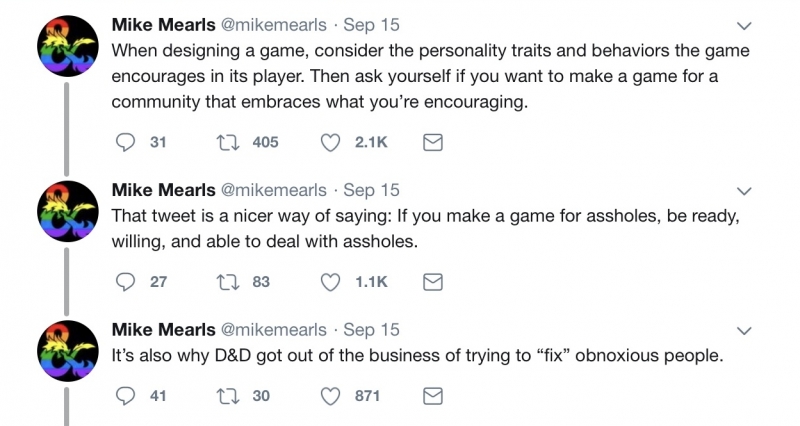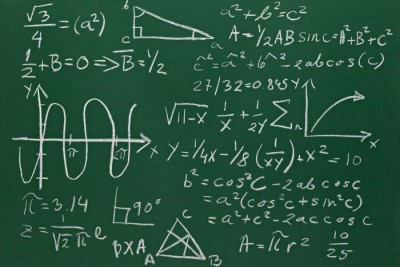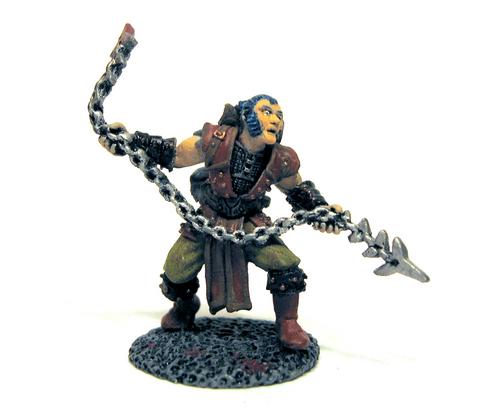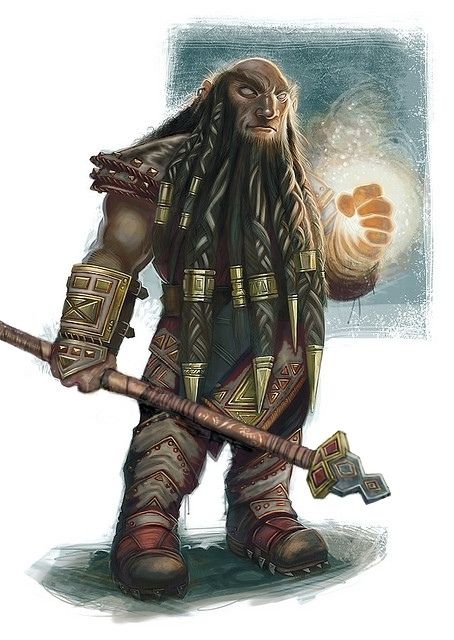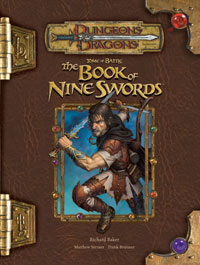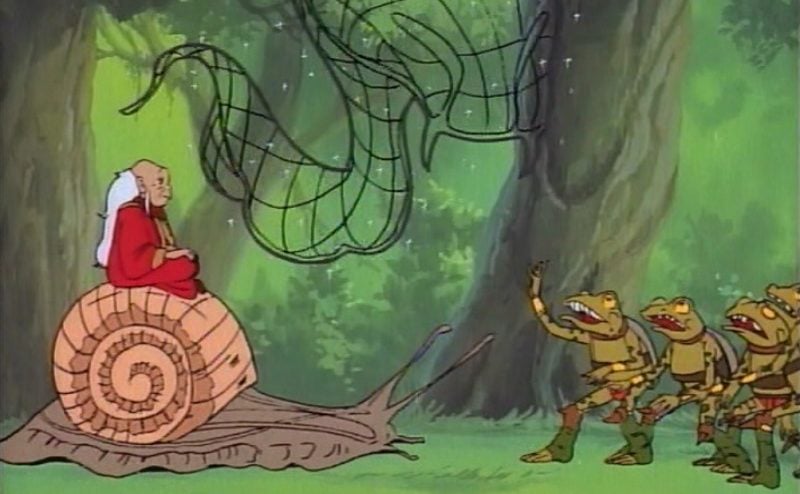D&D: Mearls Talks Game Evolution from 3.5 to 5e


Dungeons and Dragons has changed drastically from edition to edition–but one of the big changes driving 5th Edition is the playstyle that they were hoping to evoke in their players, and the community they were hoping to build. Take a look.
In a series of tweets from D&D Creative Director Mike Mearls, fans of D&D got a look at Dungeons and Dragons’ design history, from 3.5 through to 5th, and how the rules of the game encouraged a certain kind of play–and by extension behaviors–in the player community. Fascinating stuff that all started off with a bit about community behavior.
When designing a game, consider the personality traits and behaviors the game encourages in its player. Then ask yourself if you want to make a game for a community that embraces what you’re encouraging.
— Mike Mearls (@mikemearls) September 15, 2018
Which seems simple enough, but let’s take a look at the full thread.
What exactly does this mean, you might be wondering? Folks on Twitter had the same question.
It’s a big topic that I will now try to unpack in a series of Tweets. https://t.co/1TRQh19OTk
— Mike Mearls (@mikemearls) September 15, 2018
And the answer is a surprisingly deep overview of D&D Design History from about 3.5 onward. Talking about the kinds of player behaviors that each edition was designed to try and engender, whether deliberately or not. With 4th especially, their stated goal of ‘give people the tools they need to have fun’ was built around the framework of ‘make sure that a terrible player or DM can’t ruin everyone’s fun’ which meant that your game was built for a-holes, as Mearls put it. So let’s dive in to the design decisions that powered 3.5 and 4th Edition. To quote Mearls, they were driven by an anxiety about controlling the experience of the game, leaving little to chance.
Not wanting an obnoxious player or DM to ruin everyone’s fun, the designers wrote the rules to be as procedural as possible, attempting to creating an atmosphere of consistency, so that people can just follow the rules and have fun regardless of who is running or playing in a given campaign. Now, if you’ve played either of those editions, you understand what actually happened in those cases. You’d have arguments over the rules, complaints of inconsistent balance, and just pages and pages of weird edge cases to try and deal with. The rules were bloated, as Mearls puts it, trying to account for every possible situation.
At the same time, you’d find plenty of options for players–each one iterating on a subset of rules. You’d have a lot of build options within a Fighter, say: Spiked Chain fighters, two weapon fighters, greatsword fighters, spring attack fighters, whirlwinding, power attacking fighters who used scythes to try and maximize their crit potential. Just a whole lot going on–and that was in 3.x. 4th Edition, while great, had its own problems–again it came down to the options available to players. 4th had the appearance of a lot of choices, but many were mechanically not as strong as other choices, and in a ruleset written to favor mechanical expertise (which is very much what 4th edition was, 3rd too, but both in wildly different areas), making the ‘roleplaying choice’ meant making your character objectively weaker.
And with such tight balancing on monsters, not being optimized meant having a hard time hanging back–where min/maxers could utterly stomp all over all but the deadliest encounters through creative use of their powers. And remember, I like 4th Edition. But there’s a problem with this kind of design.
IMO, the basic design premise suffers from a fatal flaw. It misses out on a ton of the elements that make RPGs distinct and doesn’t speak to why people enjoy D&D in the first place.
— Mike Mearls (@mikemearls) September 15, 2018
Essentially, 3.5 and 4th were built from the ground up to encourage optimization. By presenting a wide variety of player options, they could encourage the search for builds that “broke the curve” for expected power. And you could find these frequently on the Character Optimization boards–there you’d see build after build of characters that grabbed rules from various sourcebooks and strung them together to create madness. Or beauty. Maybe both. Nothing like seeing a player break out the Book of Nine Swords, the Expanded Psionics Handbook, and Complete Warrior to make any DM start to wonder why they got out of bed that morning.
A core set of assumptions governed the transition to 5th Edition:
With 5th, we assumed that the DM was there to have a good time, put on an engaging performance, and keep the group interested, excited, and happy. It’s a huge change, because we no longer expect you to turn to the book for an answer. We expect the DM to do that.
— Mike Mearls (@mikemearls) September 15, 2018
In terms of players, we focus much more on narrative and identity, rather than specific, mechanical advantages. Who you are is more important than what you do, to the point that your who determines your what.
— Mike Mearls (@mikemearls) September 15, 2018
Advertisement
In broad terms – and based on what we can observe of the community from a variety of measures – we went from a community that focused on mechanics and expertise, to one focused on socializing and story telling.
— Mike Mearls (@mikemearls) September 15, 2018
Basically 5th Edition brings the focus of the game back onto telling a story with your friends. It puts responsibility on the DM’s (and the players’) shoulders to try and make the game fun. And they do this by focusing on narrative and identity. The subclasses are there not to offer up the most broken character ever–though you can still find a great deal of satisfaction in mechanical mastery, which is still an important element of the game, Mearls is quick to point out. It’s just that with the Bounded Accuracy system, a character that’s not optimized, say a race/class combination that doesn’t have any ability score bonus synergy, is still viable. A player can have fun playing by focusing on who they are and will still have plenty of room to figure out how to deal the most damage/end the DM’s carefully crafted encounters.
This is why, even though they’re not popular, you can still find Dwarven Wizards and Halfling Barbarians coming to a tabletop near you. The difference between optimal and sub-optimal, while appreciable, is not so vast that they can’t compete in the same arena. It’s easier to just pick something and play. There lies the emphasis is on in 5th Edition, that and socializing with your friends. Which is why, I think, 5th Edition remains the most fun of any edition.
What do you think? Does this design reflect your own experience? Let us know in the comments!

